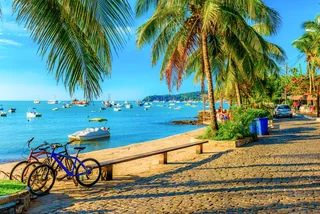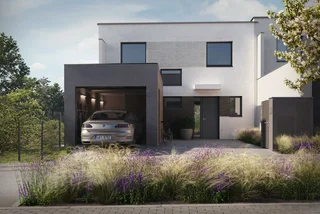The outdoor areas of the Prague Botanical Garden in the city’s northern Troja district have reopened to the public. Prague City Hall after consultation with the Czech Health Ministry decided to reopen the areas starting April 20, daily from 9 am to 6 pm. Separately, the city is also continuing its environmental efforts by planting new forests in urban areas.
“I am pleased that the Czech Health Ministry has agreed to open the outdoor exposition area of the botanical garden to the public. Of course, visitors will have to wear protective masks and keep the appropriate spacing,” Prague Deputy Mayor Petr Hlubuček (United Force for Prague) said.
The Prague Botanical Garden cover 50 hectares and include a vineyard and a Japanese garden. Many plants are now in bloom. “The Botanical Garden is full of flowering plants with the coming spring and I am glad that those interested will not miss the splendor. Visitors can now admire the precious gems of our collections, of course, subject to compliance with all regulations related to the prevention of the spread of COVID-19,” Prague Botanical Gardens director Bohumil Černý said.
Protective disinfection will also be available at the entrance. People can enter via the three main entrances with cash registers at K Pazderkám, Nádvorní and the Kovárna public transit stop. There is basic admission fee of 100 CZK, with reductions for seniors and children. Cashless payment is recommended.
Visitors cannot form in groups larger than two people unless they are part of the same family or share the same residence. People must keep their mouths and noses covered, and keep two meters from others.
Fata Morgana greenhouse and food stands including the wine shop and bistro remain closed.
The adjacent Prague Zoo remains closed under coronavirus safety rules, but people can stil helpby participating in fundraising by sponsoring animals. The zoo is still active on social media, and has posted information about recent births including a new baby elephant.
Separately, some farmers markets and car dealerships will be reopening April 20 under a previously announced relaxation of coronavirus rules. Small weddings and outdoor training activities for professional athletes and players of team sports will also be permitted, as well as limited use of universities for students who plan to graduate this year.
As for botany, the city is also continuing to plant trees to improve the environment, despite the crisis. In addition to planting trees on pastures, which were created mainly after bark beetle harvesting in existing forest stands, also new forests, such as Na Musile, are being created.
“Despite the extraordinary situation, we continue planting new trees this year. Last year we planted almost 360,000 forest tree seedlings, of which over 200,000 were planted in new areas,” Deputy Mayor Hlubuček said.
“We promised to make Prague green and we keep this promise even in times of crisis. We are replacing trees damaged by bark beetle, but we also are planting completely new forests instead of former fields. We no longer follow monocultures, but we prefer species-rich plantings. This will make greenery more resistant even in the event of drought and climate change,” Prague Mayor Zdeněk Hřib (Pirates) said.
This year a new forest Na Musile was created. It is located on the area between Vídeňská street, Kunratická spojka and the Sapa market area. During the spring months, foresters planted a total of 27,700 forest tree seedlings on an area of 3.1 hectares. Their species composition corresponds to the most natural composition suitable for this locality. Deciduous species predominate in planting.
More than half are winter oak seedlings, but also lindewn and hornbeam seedlings are also represented. The species composition is complemented by Norway maple milk, field maple and cherries. Coniferous species include larch, pine or Douglas fir. The seedlings are also protected against grazing by fencing.
“This spring planting in the Na Musile forest is just the beginning of a larger project. In the autumn, more than three hectares of forest will be planted in this area. This project will be completed in 2021 and counts on the creation of approximately 13 hectares of a mosaic of meadows, forest stands, roads and water areas,” Hlubuček said.
In addition to new plantings this year, foresters planting seedlings on loose pastures. Often these are open areas after interventions against bark beetle. This year, another 80,000 forest trees will be planted with a predominance of deciduous trees. Most of them will be added in Modřanská rokle, Chuchelský háj, Divoká Šárka, Hostivařský lesopark and Milíčovský les.












 Reading time: 3 minutes
Reading time: 3 minutes 




























